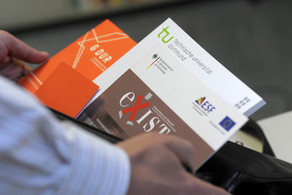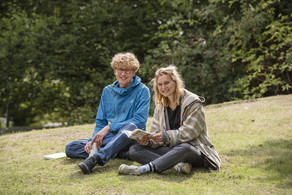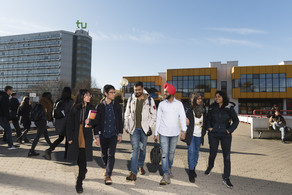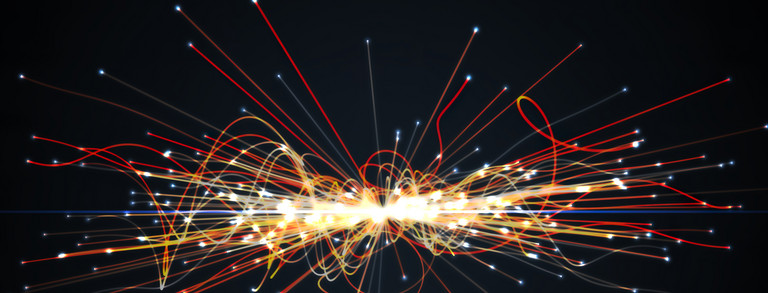Scientists at CERN observe direct coupling of the Higgs boson to the top quark
- Particle Physics
- Research
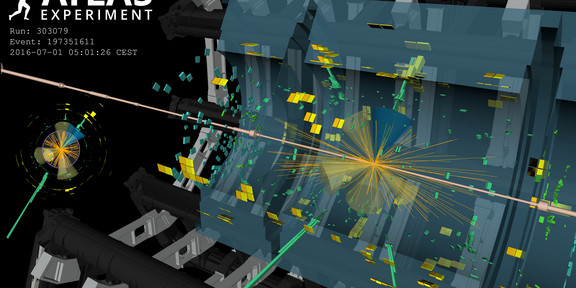
Physicists of TU Dortmund University work not only on campus, but also at the large-scale research facility CERN in Geneva, Switzerland. With the help of large experiments, they search for new elementary particles, decays, and couplings of rare particles. A TU Dortmund University team took part in the first-ever observation of an extremely rare process with the ATLAS experiment, which was presented in June at one of the most important conferences in the field of elementary particle physics.
Physicists of TU Dortmund University work not only on campus, but also at the large-scale research facility CERN in Geneva, Switzerland. With the help of large experiments, they search for new elementary particles, decays, and couplings of rare particles. A TU Dortmund University team took part in the first-ever observation of an extremely rare process with the ATLAS experiment, which was presented in June at one of the most important conferences in the field of elementary particle physics.
Scientists from the ATLAS and CMS collaborations at the Large Hadron Collider (LHC) particle accelerator at CERN, Geneva, have for the first time succeeded in directly observing the simultaneous generation of a top-quark pair, the heaviest elementary particle, and a Higgs boson. This observation shows the direct coupling of top quarks and Higgs bosons and represents an enormous step toward a better understanding of the mechanism that gives elementary particles their mass: the Higgs mechanism. The results were presented at the opening of the LHCP conference, one of the most important in this field. It took place June 4-9 in Bologna, Italy.
Coupling of the two particles
The Higgs boson was predicted in the 1960s and first discovered in 2012 at the LHC. The detection itself, though, is just the first step on the way to understanding all of the properties of the newly discovered particle. Scientists now want to find out how the Higgs boson interacts with other particles, so they can solve the mystery of how, precisely, it gives them mass. That is especially difficult with the top quark, the most massive elementary particle, since it only rarely occurs together with a Higgs boson – only about one percent of all Higgs bosons are produced in association with a top quark pair.
The new results came about through worldwide collaboration. Among the participating institutions from Germany is the Chair of Experimental Physics IV at TU Dortmund University. Some of the scientists there have been working for more than five years on the search for the process that has now been observed. In particular, they made important contributions to this observation through lead authorship of the first publication of the ATLAS collaboration on this topic and through the development of complex statistical analysis methods. In Germany, this research is funded by the Federal Ministry for Education and Research (BMBF).
Data from the LHC that were recorded by the ATLAS and CMS experiments in the years 2011 to 2017 serve as the basis for the first-ever observation. The results of the CMS collaboration were published in the journal Physics Letters B in mid-June; the results of the ATLAS collaboration were submitted to the journal Physics Letters B for publication.


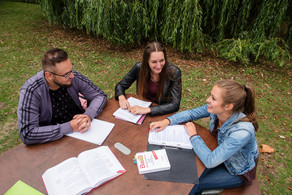
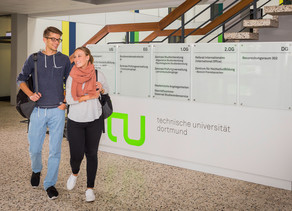
![[Translate to English:] Partner Four hands are holding the green logo of TU Dortmund University](/storages/tu_website/_processed_/1/d/csm_Partner_Nicole_Rechmann_KW_40b35bb3fd.jpg)

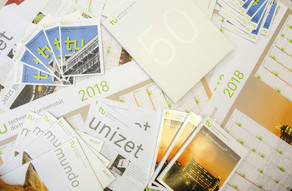
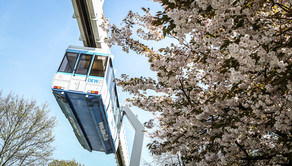
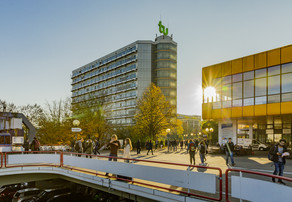
![[Translate to English:] Forschung An apparatus with tubes in a laboratory](/storages/tu_website/_processed_/0/c/csm_Forschung_Juergen_Huhn_cbd34afd6d.jpg)
![[Translate to English:] Studium Five students are sitting in a lecture hall. They are talking to each other.](/storages/tu_website/_processed_/c/9/csm_Studium_FelixSchmale_81d94adc86.jpg)
